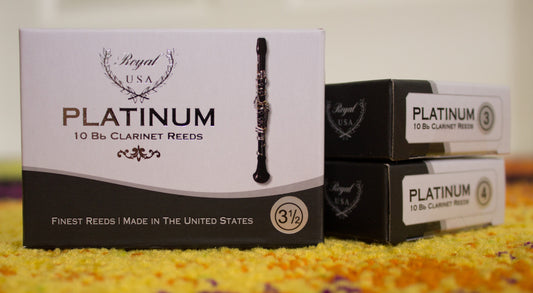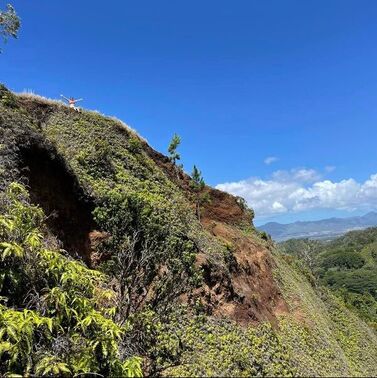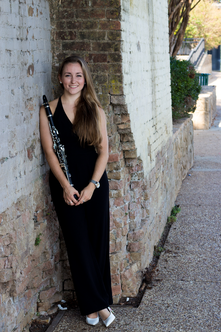African Blackwood
Most professional clarinets are manufactured from African blackwood (dalbergia melanoxylon), commonly referred to as “grenadilla” in the manufacturing trade. The tree is native to the savanna regions of Africa and is the national tree of Tanzania.



Why African Blackwood?
Many people believe that grenadilla is used because of its inherent superior sound characteristics as it is the preferred choice of woodwind manufacturers. The truth is that this wood has been used traditionally because of its incredible hardness and density. These characteristics certainly contribute to the tonal characteristics we’ve come to love, but they also mean the wood machines very well, is dimensionally stable when properly treated, and less susceptible to cracking. Other hardwoods can be used successfully in clarinet production, but they are usually softer and often more porous, producing an instrument that is more likely to undergo dimensional changes. Some people prefer the “sweeter” or “warmer” sound that can be achieved with these softer woods, but you may sacrifice “ping,” projection, and the dimensional stability that is inherent in African blackwood.

Drying Wood
Most modern, large manufacturers use kiln-dried wood to meet the high demand and dwindling stock of mature African blackwood trees.
Natural Drying / Aging
Wood that has been naturally dried over a long period of time will be the most dimensionally stable. It was standard practice for instrument makers to age wood for several years, often in several stages from lumber to billet. The timber can have a tendency to split, and often whole logs or billets/blanks will be coated in a waxy substance to allow for more even drying of the wood. The natural aging process relies on a gradual reduction in moisture, which helps stabilize the wood and allows it to dry more evenly.
Kiln / Oven Drying
The natural drying process became less cost effective as demand for instruments grew and access to high quality African blackwood became more restrictive. Manufacturers turned to kiln drying, which removes moisture through a special oven-like machine. The desired humidity level can be achieved in a fraction of the time compared to natural drying. While some manufacturers still allow the wood to age before this process, kiln drying speeds up the manufacturing time of clarinets by many years.
There are huge advantages for the manufacturer using this process, and it is the most common method today due to the scarcity of and high demand for African blackwood. It has become increasingly impractical for larger manufacturers to age wood for long periods of time. Some argue that there is no increased risk of cracking with kiln dried wood compared to naturally aged wood as long as the proper moisture content has been reached, but my experience as a woodturner suggests otherwise.
Clarinetists will talk fondly about “vintage” clarinets or assert that clarinets made from a certain early decade are far superior to modern instruments. There is no doubt that there was greater access to higher quality, naturally aged wood and a greater focus on some aspects of craftsmanship. However, improvements in mechanical design, machining techniques, and acoustical improvements make it easier to find a special new clarinet, rather than search for a “vintage” model that may need to be refurbished. This is especially true if you keep your mind and options open to various manufacturers in the initial search instead of limiting yourself to one brand or model.
Other Exotic Hardwoods

In our shop, we make custom accessories mostly from aged African blackwood but not exclusively. You will find other exotic hardwoods such as cocobolo, kingwood, mopane, and other rosewoods that are hard, dense, and dimensionally stable.

Notice that we often use a hard rubber bore insert for barrels made from exotic hardwoods, including African blackwood. The hard rubber bore prevents warping that can happen over time and is significantly more dimensionally stable than wood. If cared for properly, these barrels will give you many years of use without internal dimensional changes.
Making the most of every piece of wood...
There's a certain amount of waste you can expect when manufacturing most things, but especially wooden items. Not every piece of wood that we receive is high enough quality to make instrument parts, and some of the high quality wood will not make the cut for various reasons. As a trained wood turner, I try to use every piece of wood that comes through our shop to the best of our ability. As such, we often use this wood to make beautiful custom items such as pens, pencils, bottle stoppers, and other items. They make beautiful gifts and help us use each piece of wood to the best of our ability. You can buy one of our "Clarinet Pens" or pencils on our website. If you're looking for something more custom, like our cat below below, send us an email. Each piece is hand made by Brian and can take a week or two to finish based on time and availability, but it's worth the wait!













